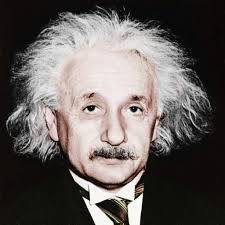Modernism,
Cubism,
Italian Futurism, Abstract Art
MODERNISM
is
a complex movement
that started after 1910 in Europe involving writers, composers,
painters, photographers, film makers.
The
idea was that there
isn’t only one truth, one
reality
ie truth and reality are not absolute.
So
reality is presented from various perspectives. In particular writers
wanted to present the mind and the unconscious.
At
the beginning of the 20th
century Paris became the centre of innovation. One avant-garde
movement was CUBISM
(1907 to the 1920s). It was inspired by the Post-Impressionist
Cézanne who said “Everything in nature takes its shape from the
sphere, the cone and the cylinder”. Cubism
rejected traditional painting and the Impressionists. Picasso
and
Braque
broke
up and reassembled objects in a scrambled way. Cubism was the
precursor to Abstract Art. It drew inspiration from tribal art
(Africa- Oceania) and primitive art.
ITALIAN
FUTURISM started
in
Italy with the Futurist Manifesto (1909) by Filippo Tommaso Marinetti
who celebrated the new industrial age and the cult
of the machine.
The Futurists revolted against the ideas of the past and celebrated
the new industrial age (for example the beauty of speed). Balla,
Severini and Boccioni adapted cubist
techniques and
gave
visual expression to the modern urban life and celebrated the cult of
the machine.
The
Russian Wassily
KANDINSKY (1866-1944)
moved to Munich and in 1910 affirmed that the objective
of art is to express the artist’s feelings NOT TO REPRESENT
OBJECTS.
Around
1913 Kandinsky began working on paintings considered abstract
works in
modern art.
AVANT-GARDE
MOVEMENTS IN EUROPE – FIRST QUARTER OF THE 20TH
CENTURY
Avant-Garde
Movements rejected
established standards.
MODERNISM
is an
Avant-Garde
movement
that started after 1910 in Europe involving writers, poets,
composers, painters, photographers, film makers.
It
is marked by :
- experimentation
- freedom of expression
- knowledge and reality are not absolute ie there isn’t only one truth, one reality. So reality is presented from various perspectives. Moreover, writers wanted to present the mind and the unconscious.
They
were influenced by:
The
physicist Albert
EINSTEIN
(1879-1955). His Theory
of Relativity reflected
the contemporary world: there is no
absolute
truth or
reality.
Einstein demonstrated (June 1905) that space
and time vary, depending on how fast speed is ie at
speed of
light in a
vacuum (300,000 kilometres per second)
Sigmund
FREUD (1856-1939)
who studied
the complex operations of the
mind.
“The
most significant level of human
consciousness is the unconscious
which can be accessed through dreams and has a great influence on
man’s conscious behavior”
- 1900 The
Interpretation of Dreams
and Three
Essays on the Theory of Sexuality
– His ideas helped to shape Modernist novels and the interior
monologue.
The
French philosopher Henri
BERGSON (1859-1941)
who made a distinction
between external time, linear and chronological and
internal
time, subjective and measured by emotions. He
helped Modernist writers who wrote about thoughts and feelings in
terms of perceptions, memories and associations.



Nessun commento:
Posta un commento